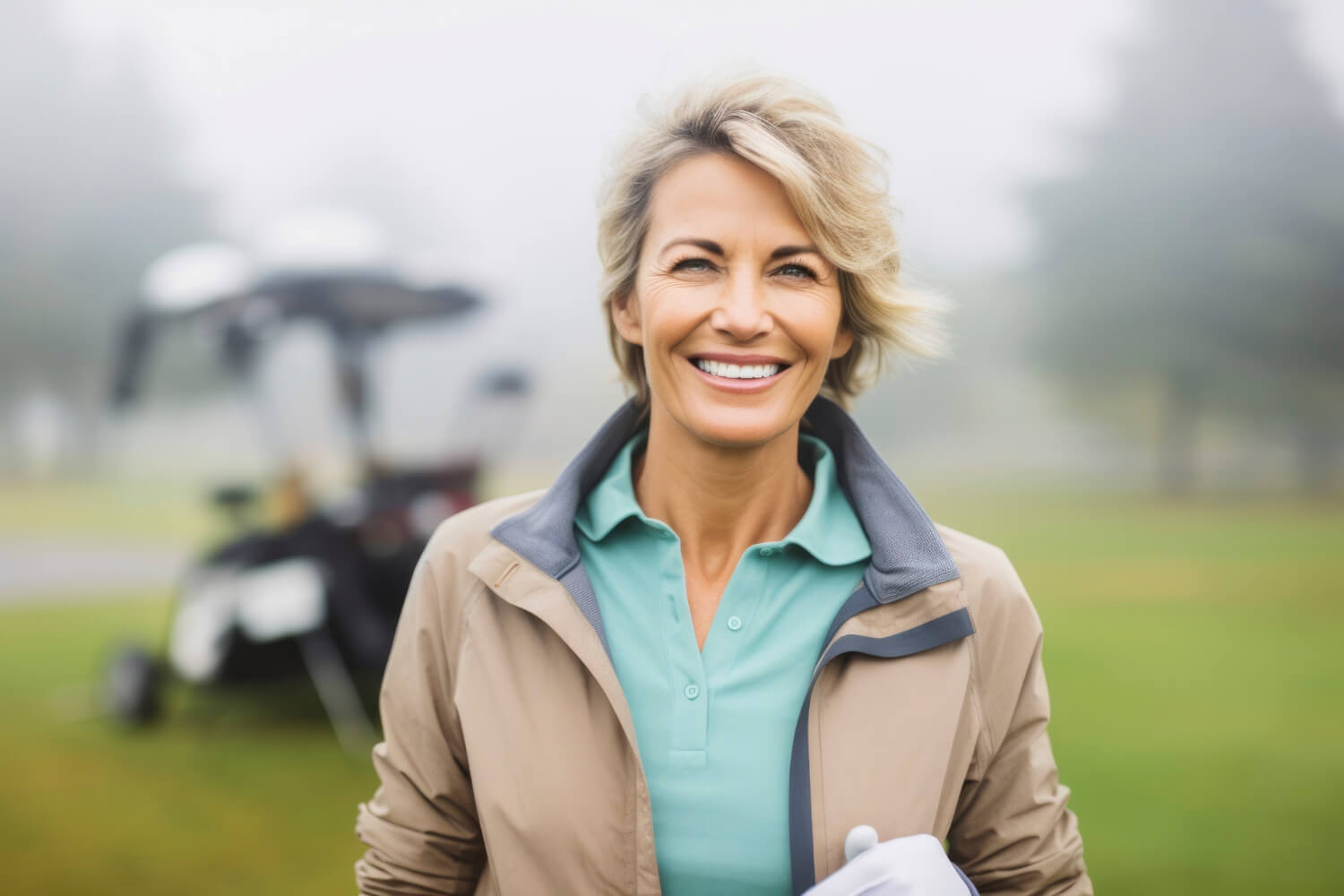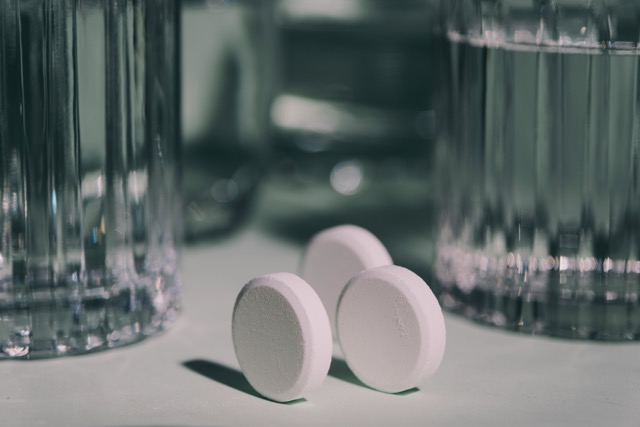The Secrets to a Good Night's Sleep - Part 1
An insight into the world of sleep in three parts - Introduction: Understanding sleep and how to improve it

Erik Karits
From a scientific perspective, adequate and restful sleep is crucial for holistic human health. As a fundamental pillar of regulation, sleep not only supports physical, emotional and mental health, but also promotes longevity. Against this background, sleep is becoming a decisive factor for health, fitness, life satisfaction and success. In addition to diet and exercise, it forms the basis on which these two pillars can have their positive effect. The importance of sleep is particularly clear when you consider the negative effects of sleep disorders and lack of sleep, which have been linked to a variety of serious conditions.
In this three-part article, we look at the sleep psychologist Prof. Günther W. Amann-Jennson the various aspects of sleep and how we can improve it His well-founded findings and recommendations provide us with valuable tools to understand and optimize our sleep so that we can not only wake up feeling rested, but also improve our health and performance in the long term.

The first part is about understanding sleep: from the different phases of sleep to the effects of lack of sleep on body and mind. In the second part, we will look at strategies to improve sleep and techniques to prevent sleep disorders. Finally, in the third part, we will explain in more detail the effects of sleep deprivation on metabolism, especially during fasting.
Prof. Amann-Jennson, why do we sleep?
From a scientific point of view, sufficient restful sleep is a 90+ factor for a person's physical, emotional and mental health. Sleep is the No. 1 regulatory pillar that supports health into old age and promotes longevity. Sleep is therefore the most important individual factor for our health, fitness, happiness and success. The other two important pillars are diet and exercise. However, sleep is also the basis for a healthy diet and exercise to have a positive effect in the medium and long term.
“Sleep is the No. 1 regulatory pillar that supports health into old age and promotes longevity. ”
Why humans spend 120 days a year just sleeping cannot be adequately answered from a scientific point of view. There are some scientific hypotheses regarding regeneration, detoxification of the body and brain, strengthening the immune system, memory consolidation, cell repair, and much more. The negative consequences of sleep disorders and lack of sleep are far better known and understood. These include cardiovascular disease, heart attack, stroke, diabetes, depression, Alzheimer's disease, cancer, and many other diseases.
What are the different stages of sleep?
After falling asleep, we first enter the light sleep phase, followed by the deep sleep phase and the REM phase (rapid eye movement). Sleep therefore takes place in cycles of around 90 minutes each. Ideally, we sleep through 5 such cycles per night, which also results in the ideal sleep duration of around 7.5 hours. This also ensures that we have the necessary time in a healthy night's sleep
- light sleep (50-55%),
- deep sleep (15-20%) and
- REM dream sleep (25-30%).
Put simply, deep sleep, which takes place primarily in the first third of the night, is important for physical regeneration and REM dream sleep, which takes place especially in the second and third third third of the night, is essential for mental regeneration and the processing of emotional stress.
What are sleep chronotypes?
The sleep process is very complex and is largely controlled by the internal clock, which synchronizes us with the course of the sun and the 24-hour day. This happens primarily via receptors in our retina, which react to certain frequencies of light (especially red and blue). Above the intersection of our optic nerves lies the so-called SCN (Suprachiasmatic Nucleus), a type of “master clock” that synchronizes external and internal timers. Most people have desynchronized internal clocks, which promotes sleep and health disorders. Not all inner watches run at the same speed, and these differences are reflected in the different chronotypes.
People who go to bed early (22-23) and get up early after 7-8 hours are referred to as “larks.” They peak in the morning and in the morning. In contrast, there are the “owls”, which never go to bed before midnight and yet usually have to get up early in the morning. These chronotypes peak in the evening and until midnight. You build up sleep debt faster and more, which, as mentioned above, can have a very negative effect. Then there are the mixed types whose internal clock is rather flexible. They are known as “pigeons” and can make falling asleep and getting up relatively flexible. The duration of sleep, including the chronotype, is largely determined by genetics (so-called watch genes).
How can we improve our sleep and sleep efficiency?
Sleep efficiency is becoming increasingly important for people with sleep disorders. It shows the relationship between the time spent in bed and the actual duration of sleep. For example, if you lie in bed for 8 hours at night and have only actually slept 6 hours of that, your sleep efficiency is 75%. This is a very poor value and automatically leads to chronic lack of sleep in the long run. A good sleeper has a sleep efficiency of over 90 percent, super sleepers get 97-98 percent.
“Modern human sleep no longer functions naturally and automatically.”
In order to achieve good sleep efficiency and at the same time good sleep quality, sleep requires very specific elementary and variable key factors. The sleep-biological interplay of sleeping place and bed system plays a decisive role here. More than 90% depends on exactly what most people do not know and therefore do not take into account. With classic industrial mattress systems and bed equipment, this is simply not possible, as comparative measurements show time and time again. The ideal bedroom climate also requires room temperatures of between 18 and 20 degrees Celsius, natural bed materials are definitely to be preferred, the compensation of technical electromagnetic fields and much more must be considered.
Similar article: Get fit: Why restful sleep is essential
That is why professional and holistic sleep coaching is needed, because modern people's sleep no longer works naturally and automatically. And sleep also needs sufficient daylight and sunlight, gravity-oriented exercise, sleep-promoting nutrition, breaks, mediation and much more during the day. The beginning should therefore always be a sleep analysis, e.g. with the scientifically based Pittsburgh Sleep Quality Index (PSQI) questionnaire, and a sleep biological assessment of the current sleeping place.
What is your view on taking naps?
Naps or power napping are generally highly recommended. They act like a “reset” on body, mind and soul, as we know it from our computer. It is important that it does not last longer than 20 minutes, otherwise there is a risk of falling into a deep sleep phase. “Getting up” from this phase during the day or after lunch is a real challenge. However, anyone who has problems or disorders falling asleep should refrain from taking a nap. This is because the so-called sleep pressure builds up over the course of the day and should be so high in the evening that we can fall asleep without any problems. Sleep pressure is reduced during the night and everything starts all over again the next day. An afternoon nap or power napping can therefore interrupt and have a negative effect on sleep pressure, which in turn often makes it difficult to fall and stay asleep.
What should be considered when taking sleeping pills?
Sleep medications, especially prescription medications, should never be taken for longer than 2-3 weeks under the supervision of a doctor or therapist. In principle, sleep medications are by no means suitable for improving sleep in the medium and long term. They do not address the actual causes, for example, of falling asleep and staying asleep or other forms of sleep problems, of which there are over 100 different types of sleep medicine. After 2-6 weeks, sleep aids can even permanently disrupt sleep, and medication is always a burden on the body and metabolism. Studies show that falling asleep in particular can definitely be improved temporarily. It is interesting that sleep aids usually have a high placebo effect. This means that ineffective placebos (dummy drugs) work better than the actual active ingredient of sleep aids (placebo sleep). At the same time, it should be noted that sleep aids can generally shorten lives.
What are the effects of blue light and caffeine on sleep?
Blue light and caffeine act as “stimulants.” Digital devices, artificial lighting, etc. in particular usually have a high proportion of blue light. These light frequencies are registered by receptors in the retina and report a false signal to the “master clock” in our brain. Namely that it is daytime and therefore the production of the sleep-regulating hormone melatonin is interrupted, delayed or even blocked. This makes falling asleep and usually staying asleep more difficult.
Caffeine has a different mechanism at work. Caffeine has the same receptors in the brain as the “fatigue hormone” adenosine. This promotes wakefulness and suppresses fatigue, including sleep. The length of time caffeine stays in our metabolism is correspondingly long, 5-7 hours. For this reason, caffeine-sensitive people, and especially people who do not drink coffee regularly, should drink the last cup of coffee or other caffeinated drinks by 5 pm at the latest.
You can find more information about sleeping and Prof. Günther W. Amann-Jennson here:
His new book “Einfach gesund schlafen”, IRSIANA Verlag, will be available in bookstores on May 14, 2024.
References
Publiziert
14.10.2024
Kategorie
Health

From a scientific perspective, adequate and restful sleep is crucial for holistic human health. As a fundamental pillar of regulation, sleep not only supports physical, emotional and mental health, but also promotes longevity. Against this background, sleep is becoming a decisive factor for health, fitness, life satisfaction and success. In addition to diet and exercise, it forms the basis on which these two pillars can have their positive effect. The importance of sleep is particularly clear when you consider the negative effects of sleep disorders and lack of sleep, which have been linked to a variety of serious conditions.
In this three-part article, we look at the sleep psychologist Prof. Günther W. Amann-Jennson the various aspects of sleep and how we can improve it His well-founded findings and recommendations provide us with valuable tools to understand and optimize our sleep so that we can not only wake up feeling rested, but also improve our health and performance in the long term.

The first part is about understanding sleep: from the different phases of sleep to the effects of lack of sleep on body and mind. In the second part, we will look at strategies to improve sleep and techniques to prevent sleep disorders. Finally, in the third part, we will explain in more detail the effects of sleep deprivation on metabolism, especially during fasting.
Prof. Amann-Jennson, why do we sleep?
From a scientific point of view, sufficient restful sleep is a 90+ factor for a person's physical, emotional and mental health. Sleep is the No. 1 regulatory pillar that supports health into old age and promotes longevity. Sleep is therefore the most important individual factor for our health, fitness, happiness and success. The other two important pillars are diet and exercise. However, sleep is also the basis for a healthy diet and exercise to have a positive effect in the medium and long term.
“Sleep is the No. 1 regulatory pillar that supports health into old age and promotes longevity. ”
Why humans spend 120 days a year just sleeping cannot be adequately answered from a scientific point of view. There are some scientific hypotheses regarding regeneration, detoxification of the body and brain, strengthening the immune system, memory consolidation, cell repair, and much more. The negative consequences of sleep disorders and lack of sleep are far better known and understood. These include cardiovascular disease, heart attack, stroke, diabetes, depression, Alzheimer's disease, cancer, and many other diseases.
What are the different stages of sleep?
After falling asleep, we first enter the light sleep phase, followed by the deep sleep phase and the REM phase (rapid eye movement). Sleep therefore takes place in cycles of around 90 minutes each. Ideally, we sleep through 5 such cycles per night, which also results in the ideal sleep duration of around 7.5 hours. This also ensures that we have the necessary time in a healthy night's sleep
- light sleep (50-55%),
- deep sleep (15-20%) and
- REM dream sleep (25-30%).
Put simply, deep sleep, which takes place primarily in the first third of the night, is important for physical regeneration and REM dream sleep, which takes place especially in the second and third third third of the night, is essential for mental regeneration and the processing of emotional stress.
What are sleep chronotypes?
The sleep process is very complex and is largely controlled by the internal clock, which synchronizes us with the course of the sun and the 24-hour day. This happens primarily via receptors in our retina, which react to certain frequencies of light (especially red and blue). Above the intersection of our optic nerves lies the so-called SCN (Suprachiasmatic Nucleus), a type of “master clock” that synchronizes external and internal timers. Most people have desynchronized internal clocks, which promotes sleep and health disorders. Not all inner watches run at the same speed, and these differences are reflected in the different chronotypes.
People who go to bed early (22-23) and get up early after 7-8 hours are referred to as “larks.” They peak in the morning and in the morning. In contrast, there are the “owls”, which never go to bed before midnight and yet usually have to get up early in the morning. These chronotypes peak in the evening and until midnight. You build up sleep debt faster and more, which, as mentioned above, can have a very negative effect. Then there are the mixed types whose internal clock is rather flexible. They are known as “pigeons” and can make falling asleep and getting up relatively flexible. The duration of sleep, including the chronotype, is largely determined by genetics (so-called watch genes).
How can we improve our sleep and sleep efficiency?
Sleep efficiency is becoming increasingly important for people with sleep disorders. It shows the relationship between the time spent in bed and the actual duration of sleep. For example, if you lie in bed for 8 hours at night and have only actually slept 6 hours of that, your sleep efficiency is 75%. This is a very poor value and automatically leads to chronic lack of sleep in the long run. A good sleeper has a sleep efficiency of over 90 percent, super sleepers get 97-98 percent.
“Modern human sleep no longer functions naturally and automatically.”
In order to achieve good sleep efficiency and at the same time good sleep quality, sleep requires very specific elementary and variable key factors. The sleep-biological interplay of sleeping place and bed system plays a decisive role here. More than 90% depends on exactly what most people do not know and therefore do not take into account. With classic industrial mattress systems and bed equipment, this is simply not possible, as comparative measurements show time and time again. The ideal bedroom climate also requires room temperatures of between 18 and 20 degrees Celsius, natural bed materials are definitely to be preferred, the compensation of technical electromagnetic fields and much more must be considered.
Similar article: Get fit: Why restful sleep is essential
That is why professional and holistic sleep coaching is needed, because modern people's sleep no longer works naturally and automatically. And sleep also needs sufficient daylight and sunlight, gravity-oriented exercise, sleep-promoting nutrition, breaks, mediation and much more during the day. The beginning should therefore always be a sleep analysis, e.g. with the scientifically based Pittsburgh Sleep Quality Index (PSQI) questionnaire, and a sleep biological assessment of the current sleeping place.
What is your view on taking naps?
Naps or power napping are generally highly recommended. They act like a “reset” on body, mind and soul, as we know it from our computer. It is important that it does not last longer than 20 minutes, otherwise there is a risk of falling into a deep sleep phase. “Getting up” from this phase during the day or after lunch is a real challenge. However, anyone who has problems or disorders falling asleep should refrain from taking a nap. This is because the so-called sleep pressure builds up over the course of the day and should be so high in the evening that we can fall asleep without any problems. Sleep pressure is reduced during the night and everything starts all over again the next day. An afternoon nap or power napping can therefore interrupt and have a negative effect on sleep pressure, which in turn often makes it difficult to fall and stay asleep.
What should be considered when taking sleeping pills?
Sleep medications, especially prescription medications, should never be taken for longer than 2-3 weeks under the supervision of a doctor or therapist. In principle, sleep medications are by no means suitable for improving sleep in the medium and long term. They do not address the actual causes, for example, of falling asleep and staying asleep or other forms of sleep problems, of which there are over 100 different types of sleep medicine. After 2-6 weeks, sleep aids can even permanently disrupt sleep, and medication is always a burden on the body and metabolism. Studies show that falling asleep in particular can definitely be improved temporarily. It is interesting that sleep aids usually have a high placebo effect. This means that ineffective placebos (dummy drugs) work better than the actual active ingredient of sleep aids (placebo sleep). At the same time, it should be noted that sleep aids can generally shorten lives.
What are the effects of blue light and caffeine on sleep?
Blue light and caffeine act as “stimulants.” Digital devices, artificial lighting, etc. in particular usually have a high proportion of blue light. These light frequencies are registered by receptors in the retina and report a false signal to the “master clock” in our brain. Namely that it is daytime and therefore the production of the sleep-regulating hormone melatonin is interrupted, delayed or even blocked. This makes falling asleep and usually staying asleep more difficult.
Caffeine has a different mechanism at work. Caffeine has the same receptors in the brain as the “fatigue hormone” adenosine. This promotes wakefulness and suppresses fatigue, including sleep. The length of time caffeine stays in our metabolism is correspondingly long, 5-7 hours. For this reason, caffeine-sensitive people, and especially people who do not drink coffee regularly, should drink the last cup of coffee or other caffeinated drinks by 5 pm at the latest.
You can find more information about sleeping and Prof. Günther W. Amann-Jennson here:
His new book “Einfach gesund schlafen”, IRSIANA Verlag, will be available in bookstores on May 14, 2024.
Referenzen
Publiziert
14.10.2024
Kategorie
Health

.svg)















